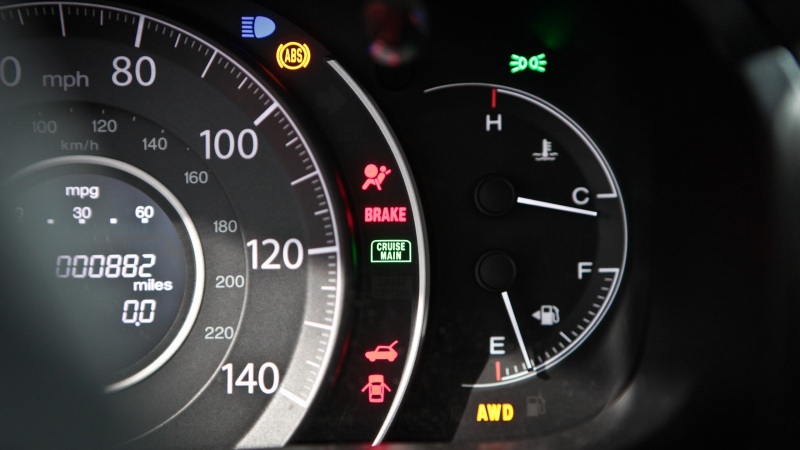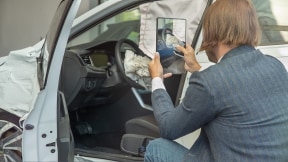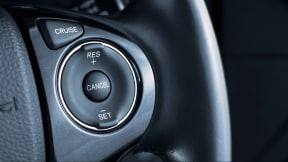Decoding your dashboard lights: What do all those symbols mean?

Decoding your dashboard can feel like trying to understand another language. You’re on the highway and suddenly, a strange red symbol appears. In that moment it’s hard to decide what to do. Should you ignore it? Pull over? Go straight to the repair shop? Scream “help” from your window?
While the best thing might be to just pull over and look at your user manual, because some of the symbols may be difficult to understand, it may help you in the given moment to know some of the most common symbols off the top of your head. Read on for the most common dashboard symbols, what they mean and what you might want to do, or not do, when that little light pops up.
The most common dashboard symbols
Let’s start with why dashboard symbols exist. Dashboard symbols help keep you, the driver, safe. They can prevent breakdowns, and alert you about potential malfunctions. Now, some cars may have over 60 dashboard symbols appearing in any number of combinations. We’ve summarized the most common ones to look for:
- Check engine: Resembles the silhouette of an engine in orange. The check engine symbol is responsible for communicating a few things since it references the entire engine and emissions system. It might mean a cap or connection is loose, or something more serious. If the light turns on and you notice any drastic changes to your car's function, pull over and call roadside service for assistance.
- Lamp out: An orange-yellow bulb with rays surrounding it. This means that one of your external lights is out. This is an important repair to schedule, especially if the bulb is a headlamp or taillight — replacing this can save you from tickets and accidents.
- Coolant temperature: Shown as a thermometer over a wave, this signals that your car is overheating, which is unsafe for the driver and the vehicle itself. If you continue driving, you’re potentially risking permanent damage to the engine or expensive repairs.
- Oil pressure warning: A red oil can with a little drop coming from its spout. When this turns on, it may mean your car needs more oil. If refilling the oil doesn’t turn the light off, it may mean you have an oil leak, which can lead to engine damage.
- Battery: A rectangle with a plus and minus sign on either end. Even if your car starts up, this light may mean the battery is on its way out or indicate a larger issue with the electrical system that needs to be addressed.
- Pressure system: An orange-yellow exclamation point inside a shape with a flat bottom. This symbol lets you know that something is off with your tire pressure. Filling it with air may solve your issue. But if not, you may need to repair or replace the tire to avoid being stuck with a flat.
- Engine temperature: An orange-yellow or red symbol that looks like a thermometer inside of a gear. This light indicates that the internal temperature is dangerously high and needs attention.
- Brake system: Often a red exclamation point inside of a circle surrounded by parentheses. This warning indicates a problem with the brakes. This can be anything from low brake fluid, to worn out brake pads, to something bigger. And as we know, without brakes, you can’t stop.
- Door open: Looks like a little car with doors open. This signals that your car door wasn’t shut properly. It may also indicate a broken sensor if your attempt to shut the door securely fails to turn off the signal.
- Washer fluid: Shows the front windshield with a perpendicular dashed, curved line. When this light goes on, it’s time to top off your washer fluid.
- Low fuel: Resembles a gas station pump. When this light turns on, you need to find gas ASAP. Fun fact: The arrow next to this symbol tells you which side your gas tank can be filled on. Now you don’t have to stick your head out of your door to find it.
Why are the dashboard lights different colors?
The dashboard lights are different colors based on their importance. If you see a red symbol pop-up, that means this situation needs attention immediately. An orange symbol implies service will be required in the near future. Green and blue symbols imply the vehicle is operating properly.
What to do when a dashboard symbol pops up?
You might be wondering what you should do if a dashboard symbol pops up. It depends on what symbol you’re seeing and how long you’ve been seeing it for. Like we mentioned earlier, some symbols can cause serious damage to your car.
If you notice your car is steaming or smoking under the hood or the engine is making unusual noises, you’ll want to take it to a mechanic as soon as possible. If you notice something like a lamp out, washer fluid or door open sign, these may be less urgent, but still important. Either way, knowing what all those dashboard lights mean as soon as they pop up can help you decide quickly what your next step will be, and whether it will be urgent or in due time.



